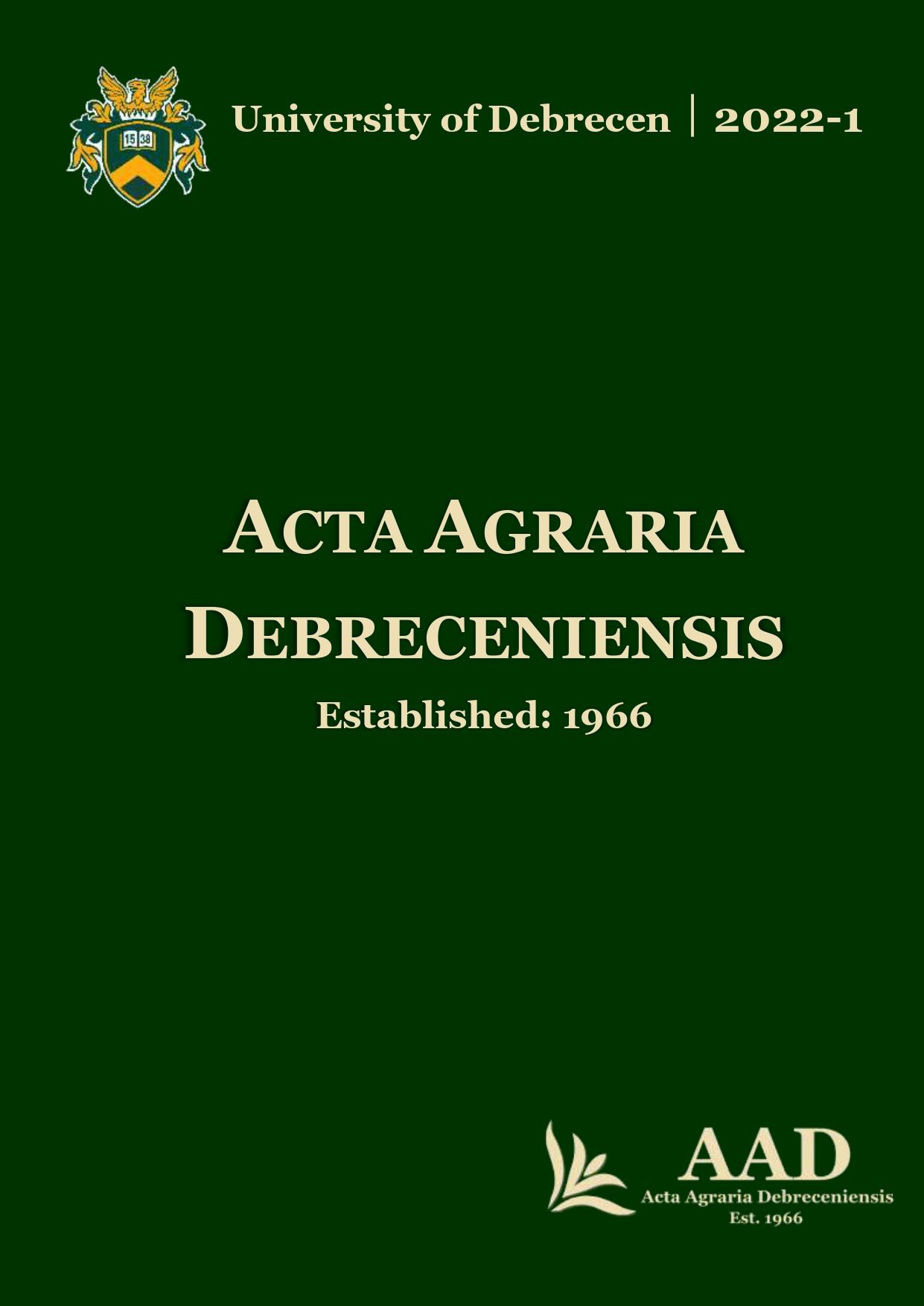Investigation of the mycelial compatibility of Macrophomina phaseolina in the Carpatian Basin
Authors
View
Keywords
License
Copyright (c) 2022 by the Author(s)

This work is licensed under a Creative Commons Attribution 4.0 International License.
How To Cite
Accepted 2022-04-12
Published 2022-05-26
Abstract
Macrophomina phaseolina is a globally widespread fungal pathogen. The fungus has a very wide range of hosts. Under optimal conditions, M. phaseolina can cause serious damage tothe host plants. In this study, the mycelial compatibility of different M. phaseolina isolates was investigated. From 2019 to 2021, 12 sunflower samples were collected from different regions of the Carpathian Basin, 9 samples from Hungary, 1 sample from Austria, and 2 samples from Slovakia. The genetic variability of the pathogen is a critical problem in plant protection. Two compatible pathogen strains can easily exchange their genetic material for each other, which can lead to the development of resistance. All collected samples (12) were tested to examine their compatibility. Isolates from all tested samples were paired with isolates from all other samples thus, a total of 66 pairings were made. During the examinations of mycelial compatibility, only 20 pairs of all possible pairings were found to be incompatible, and all others (46) were found to be compatible.
References
- Bokor, P. (2007): Macrophomina phaseolina causing a charcoal rot of sunflower through Slovakia. Biologia (Bratislava) 62(2): 136–138.
- Blanco-Lopéz, M.A.–Jiménéz-Diáz, R.M. (1983): Effect of irrigation on susceptibility of sunflower to the host by Macrophomina phaseolina. Plant Disease, 67: 1214–1217.
- Csöndes, I. (2009): A Macrophomina phaseolina károsítását befolyásoló tényezők vizsgálata eltérő gazda-parazita kapcsolatokban [Investigation of the factors affecting damage of Macrophomina phaseolina in different host-parasite relationships]. PhD thesis. Keszthely, Hungary: Pannon University. 120 p.
- Csöndes, I. (2011): Mycelial compatibility of Hungarian Macrophomina phaseolina isolates. Acta Agronomica Hungarica, 59 (4): 371–377.
- Csüllög, K.–Tarcali, G. (2020): Investigation of the mycelial compatibility of Macrophomina phaseolina. Folia Oecologica, 47 (2): 153–158.
- Damtea, T.–Ojiewo, C.O. (2016): Current status of wilt/root rot diseases in major chickpea growing areas of Ethiopia. Archives of Phytopathology and Plant Protection, 49: 222–238.
- De Barros, L.M. (1985): Disease Complex (Fusarium oxysporum and Macrophomina phaseolina) responsible for sunflower wilt in Portugal. In: Proc. 11th International Sunflower Conference, Mar del Plata, Argentina. International Sunflower Associaton, Paris, France. p. 445–448.
- Hunt, J. (1952): List of intercepted plant pests, 1951 Service and Regulatory announcements. U.S. Department of Agriculture, Agricultural. Research Service, Plant Quarantine Division.
- Khan, S.N. (2007): Macrophomina phaseolina as causal agent for charcoal rot of sunflower Mycopathology 5(2): 111–118.
- Magyar, D.–Tischner, Z.–Páldy, A.–Kocsubé, S.–Dancsházy, Z.–Halász, Á.–Kredics, L. (2021): Impact of global megatrends on the spread of microscopic fungi in the Pannonian Biogeographical Region. Fungal Biology Reviews, 37, 71–88. doi:10.1016/j.fbr.2021.03.006
- Marvasti, F.B.–Banihashemi, Z. (2019): Mycelial compatibility groups of Macrophomina phaseolina in Iran. Iranian Journal of Plant Pathology. 2019 vol. 55 No.2. 115–128.
- Meyer, W.A.–Sinclair, J.B.–Khare, M.N. (1972): Biology pf Macrophomina phaseoli in Soil Studied with Selective Media. Phytopathology Vol. 63. p. 613–619.
- Parmar, H.–Kapadiya, H.J.–Bhaliya, C.M.–Patel, R.C. (2018): Effect of Media and Temperature on the Growth and Sclerotial Formation of Macrophomina phaseolina (Tassi) Goid causing Root Rot of Castor. International Journal of Current Microbiology and Applied Sciences 7(02): 671–675.
- Premamalini, T.–Ambujavalli, B.T.–Vijayakumar, R.–Rajyoganandh, S.V.–Kalpana, S.–Kindo, A.J. (2012): Fungal keratitis caused by Macrophomina phaseolina – a case report. Medical Mycological Case Reports, 1 (1): 123–126.
- Purkayastha, S.–Kaur, B.–Dilbaghi, N.–Chaudhury, A. (2006): Characterization of Macrophomina phaseolina, the charcoal rot pathogen of cluster bean, using conventional techniques and PCR-based molecular markers. Plant Pathology, 55, 106–116.
- Raut, J.G.–Bhombe, B.B. (1984): Longevity of M. phaseolina in sunflower seeds. Indian Phytopathology, 37(2): 333–334.
- Santini, A.–Liebhold, A.–Migliorini, D.–Woodward, S. (2018): Tracing the role of human civilization in the globalization of plant pathogens. ISME J. 12 (3), 647–652.
- Santos, A.F.–Athayde, J.T.–Dan, E.L. (1984): Microflora associada às sementes de feijão (Phaseolus vulgaris) no Estado do Espírito Santo. Fitopatologia Brasileira, Brasília, DF, v. 9, n. 3, p. 379, 1
- Šárová, J.–Kudlíková, I.–Žalud, Z.–Veverka, K. (2003): Macrophomina phaseolina (Tassi) Goid. moving North – temperature adaptation or change in climate? Journal of Plant Disease and Protection 110: 444–448.
- Scholefield, S.M.–Griffin, M.J. (1979): Charcoal rot (Macrophomina phaseolina) on mung bean. Plant Pathology 28(3): 155–156.
- Singh, T.–Singh, D. (1982): Transmission of seed-borne inoculum of Macrophomina phaseolina from seed to plant. Proceedings: Plant Sciences, Bangalore, v. 91, n. 4, p. 357–370.
- Vajna, L.–Békési, P. (2009): A növénykórokozók forgalmazása, szerepe globalizálódó világunkban. Az új kihívások új válaszokat kívánnak. XIX. Növényvédelmi Fórum, Keszthely. Szóbeli közlés.

 https://doi.org/10.34101/actaagrar/1/10654
https://doi.org/10.34101/actaagrar/1/10654